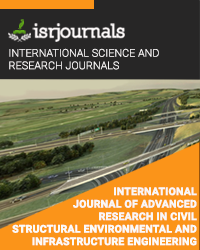engineering towards a sustainable future
Narahari Gautam,Rahul Panjiyar
Published in International Journal of Advanced Research in Civil,Structural,Environmental and Infrastructure Engineering and Developing
ISSN: 2320-723X Impact Factor:1.7 Volume:1 Issue:3 Year: 08 April,2014 Pages:87-93

Abstract
The population of the world is increasing at an alarming rate demanding the large volume of construction work resulting in various environmental impacts and threatening the availability of resources for future generation. The production of large volume of waste products, release of GHGs and energy consumption by construction activities is increasing day by day. There is an immediate necessity to act promptly for the better future by changing today’s world i.e. switching to sustainable development. There is considerably a greater responsibility in the hand of civil engineers for the change through effective use of minimal available resources, various alternative uses, reduction and reuse principle and effective management of present resources. Steel and cement, being the chief building material, effective action must be taken for the minimum use of these construction materials either by reducing the use through effective design or by using the alternatives.
Kewords
sustainability, cement, steel, carbondioxide, population.
Reference
[1]. World Population Prospect the 2012 Revision- United Nation, Department of Economic and Social Affairs, Population Division ( June 13, 2013) [2]. International Programs Centre at the US Census Bureau, Population Division [3]. International Energy Agency(IEA) Statistics [4]. Carbon Dioxide Information Analysis Center (CDIAC)-United States Department of Energy [5]. Chau,K.W (2007) Incorporation of Sustainability Concept into a Civil Engineering Curriculum, Journal of Professional Issues in Engineering education and Practice 133(3), 188-191. [6]. Kelly W.E. (2008) General Education for Civil Engineers: Sustainable Development ,Journal of Professional Issues in Engineering education and practice 134(1), 75-83. [7]. Siller, T.J. (2001) Sustainability and Critical Thinking in Civil Engineering Curriculum, Journal of Professional Issues in Engineering education and practice 127(3), 104-108. [8]. Brundtland, G. (1987) “Our Common Future,” World Commission on Environment and Development, United Nations. [9]. Chaturvedi, S. and Ochsendorf, J. (2004). “Global Environment Impacts due to Cement and Steel,” Structural Engineering International, Zurich, IABSE, 14/3, August, PP 198-200. [10]. ASCE (2001), “The role of Civil Engineers in Sustainable Development,” ASCE Policy Statement 418, American Society of Civil Engineers, Approved on April 27, 2001.

